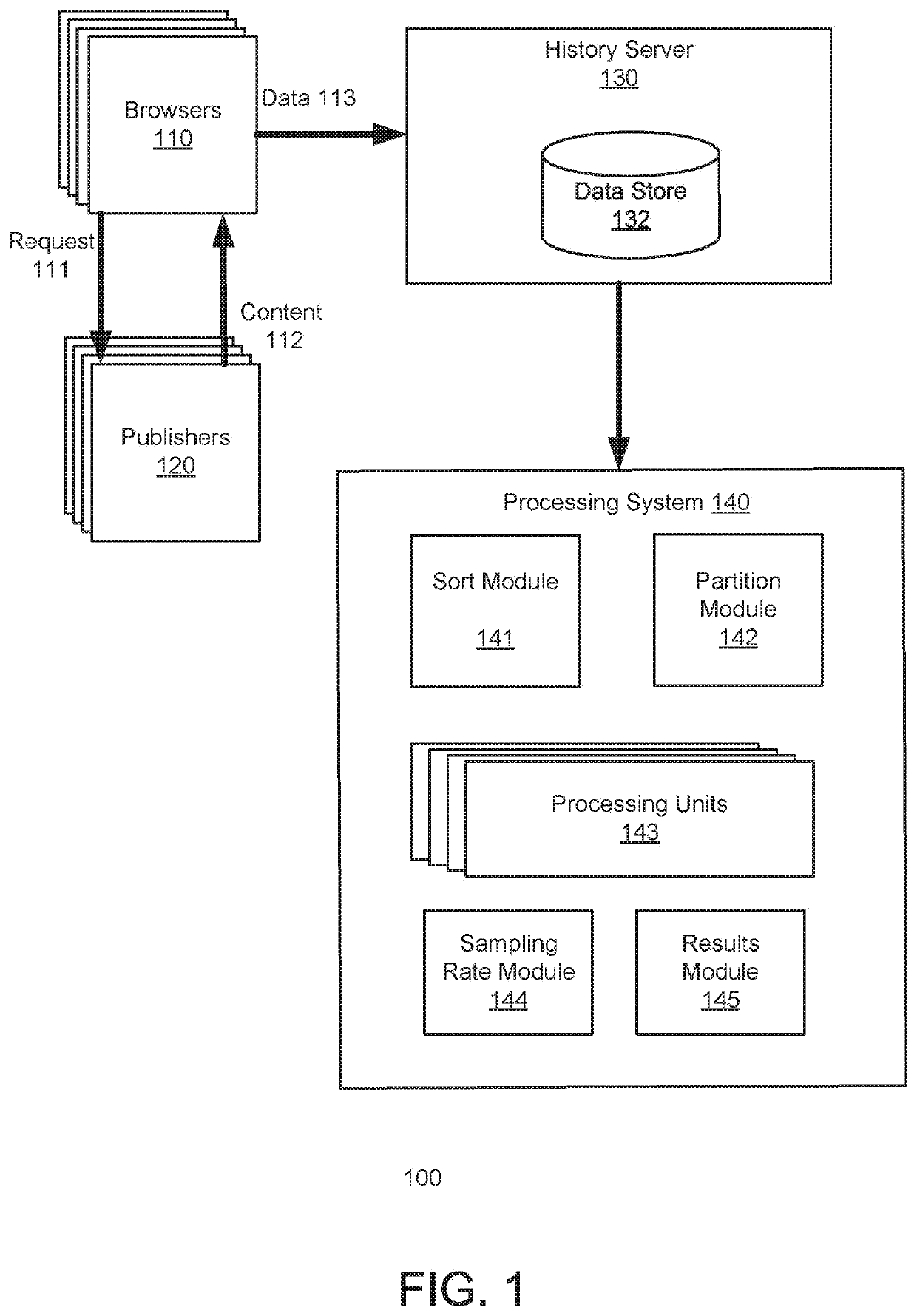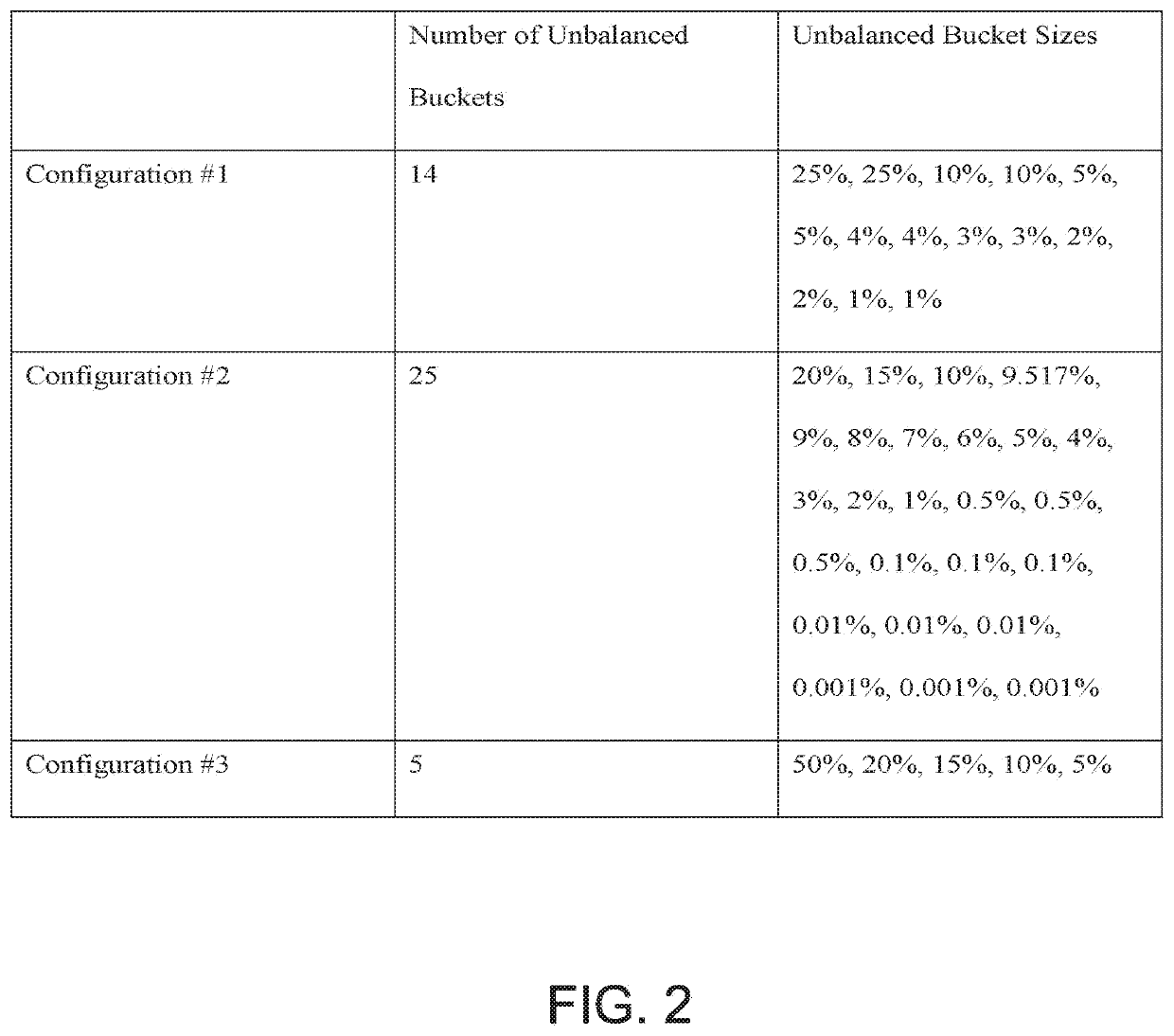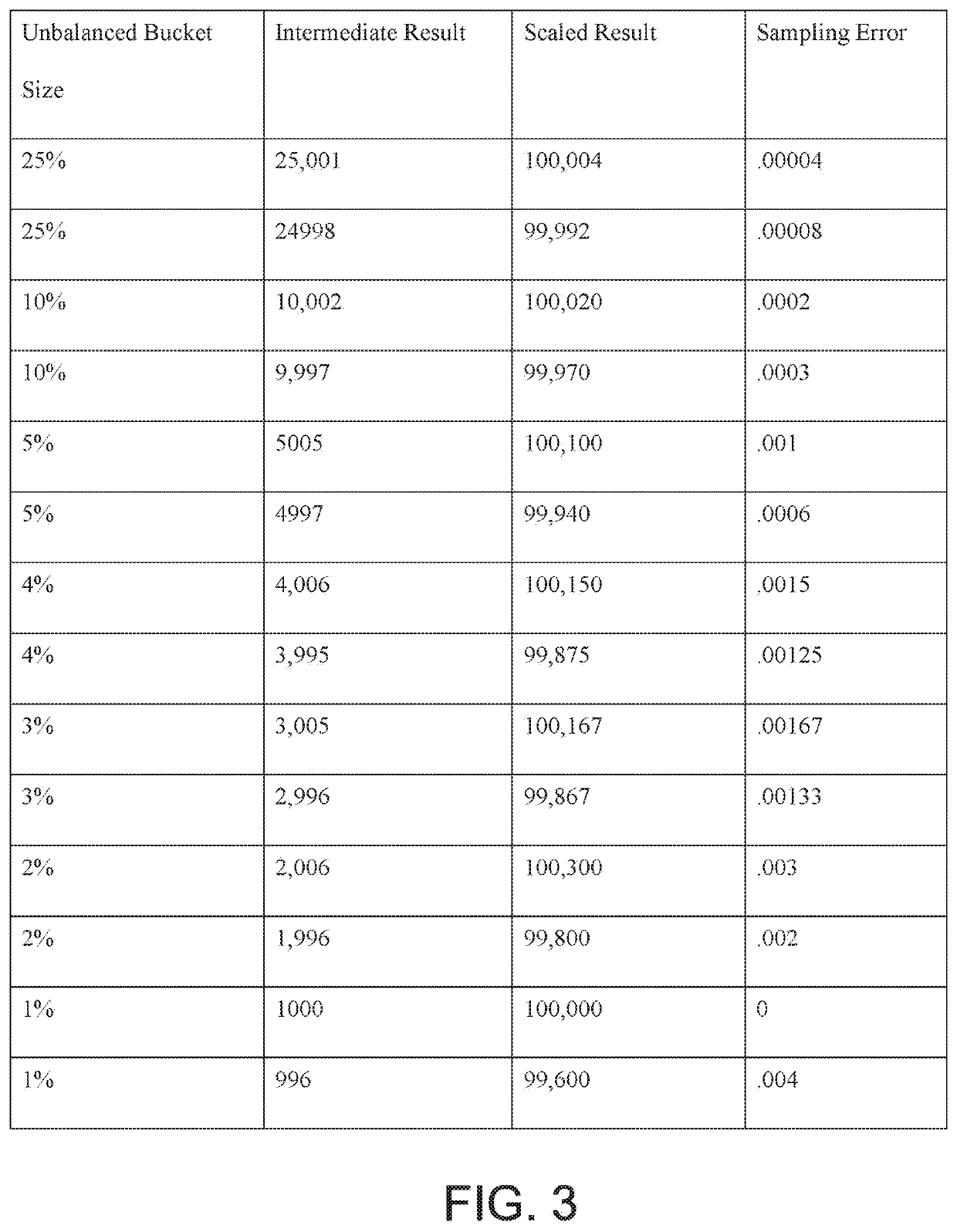Identifying variance in distributed systems
a distributed system and variance technology, applied in the field of large data set processing, can solve the problems of time-consuming and resource-intensive processing queries on large data sets, and be unsuitable for some automated applications, and achieve the effect of automatically and efficiently selecting a sampling rate and trading off some processing efficiency
- Summary
- Abstract
- Description
- Claims
- Application Information
AI Technical Summary
Benefits of technology
Problems solved by technology
Method used
Image
Examples
Embodiment Construction
[0015]Embodiments of the invention provide an automatic and efficient method for determining a sampling rate for a sequence of data processing jobs. To optimize throughput, a prior art processing system may generate balanced or nearly balanced partitions for processing in a distributed or parallel system. In contrast, embodiments of the invention purposely configure unbalanced buckets which are unbalanced partitions, and assign unbalanced data loads (e.g. unbalanced buckets) to each of a plurality of processing units; the intermediate results obtained from the unbalanced partitions enable the system to rapidly and efficiently determine a sampling rate for subsequent processing jobs, which offsets the inconvenience of having some processing units complete their tasks before others due to variation in the data loads across the processing units. Advantageously, the invention can adapt to fluctuations in the quality and quantity of data, as subsequent data processing jobs can process sa...
PUM
 Login to View More
Login to View More Abstract
Description
Claims
Application Information
 Login to View More
Login to View More - R&D
- Intellectual Property
- Life Sciences
- Materials
- Tech Scout
- Unparalleled Data Quality
- Higher Quality Content
- 60% Fewer Hallucinations
Browse by: Latest US Patents, China's latest patents, Technical Efficacy Thesaurus, Application Domain, Technology Topic, Popular Technical Reports.
© 2025 PatSnap. All rights reserved.Legal|Privacy policy|Modern Slavery Act Transparency Statement|Sitemap|About US| Contact US: help@patsnap.com



